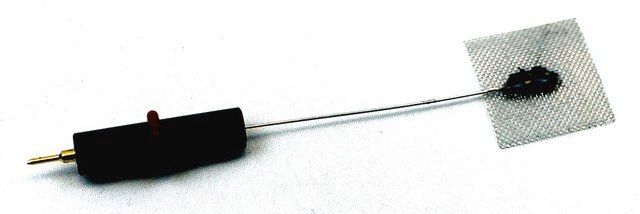267244
Platinum
foil, thickness 0.025 mm, 99.9% trace metals basis
Synonym(s):
Platinum element, Platinum gray
Sign Into View Organizational & Contract Pricing
All Photos(1)
About This Item
Empirical Formula (Hill Notation):
Pt
CAS Number:
Molecular Weight:
195.08
EC Number:
MDL number:
UNSPSC Code:
12352300
PubChem Substance ID:
NACRES:
NA.23
Recommended Products
Quality Level
Assay
99.9% trace metals basis
form
foil
resistivity
10.6 μΩ-cm, 20°C
thickness
0.025 mm
bp
3827 °C (lit.)
mp
1772 °C (lit.)
density
21.45 g/cm3 (lit.)
SMILES string
[Pt]
InChI
1S/Pt
InChI key
BASFCYQUMIYNBI-UHFFFAOYSA-N
General description
This platinum foil is a thin sheet of platinum with a thickness of 0.025 mm and high chemical purity. Platinum is a dense, silver-white metal that is highly resistant to corrosion and has a high melting point. Platinum is a precious metal that is valued for its rarity and chemical stability, and is often used in jewelry, coins, and other decorative objects. In material science, it is often used as electrodes in fuel cells, batteries, and other electrochemical devices, as a substrate for electroplating, and as an inert crucible or dish among other applications.
Application
Platinum foil can be used for a variety of applications such as:
- growth of high crystalline boron nitride (BN) material for UV optoelectronic devices.
- fabrication of electrochemically stable microelectrode arrays
- a counter electrode for the fabrication of supercapacitors
- an enzyme electrode probe for potential usage in biosensors
Quantity
350 mg = 25 × 25 mm; 1.4 g = 50 × 50 mm
Storage Class Code
13 - Non Combustible Solids
WGK
WGK 3
Flash Point(F)
Not applicable
Flash Point(C)
Not applicable
Certificates of Analysis (COA)
Search for Certificates of Analysis (COA) by entering the products Lot/Batch Number. Lot and Batch Numbers can be found on a product’s label following the words ‘Lot’ or ‘Batch’.
Already Own This Product?
Find documentation for the products that you have recently purchased in the Document Library.
Customers Also Viewed
Electrodeposition of nickel hydroxide films on nickel foil and its electrochemical performances for supercapacitor
Fu GR, et al.
International Journal of Electrochemical Science, 4(8), 1052-1052 (2009)
Pt based enzyme electrode probes assembled with Prussian Blue and conducting polymer nanostructures
Curulli A, et al.
Biosensors And Bioelectronics, 20(6), 1223-1232 (2004)
Muhammad Rashid et al.
Journal of nanoscience and nanotechnology, 13(5), 3627-3633 (2013-07-19)
Platinum nanoparticles (Pt NPs) were chemically deposited on a Nafion polymer electrolyte membrane by the impregnation-reduction (I-R) procedure to prepare an active electrode for solid electrochemical sensors. Various analysis methods such as SEM, EDX, XRD and cyclic voltammogram (CV) measurements
Wei Sun et al.
Materials science & engineering. C, Materials for biological applications, 33(4), 1907-1913 (2013-03-19)
In this paper a platinum (Pt) nanoparticle decorated graphene (GR) nanosheet was synthesized and used for the investigation on direct electrochemistry of myoglobin (Mb). By integrating GR-Pt nanocomposite with Mb on the surface of carbon ionic liquid electrode (CILE), a
Loris De Cecco et al.
PloS one, 8(3), e58849-e58849 (2013-03-14)
We recently reported that peritumoral CpG-ODN treatment, activating TLR-9 expressing cells in tumor microenvironment, induces modulation of genes involved in DNA repair and sensitizes cancer cells to DNA-damaging cisplatin treatment. Here, we investigated whether this treatment induces modulation of miRNAs
Our team of scientists has experience in all areas of research including Life Science, Material Science, Chemical Synthesis, Chromatography, Analytical and many others.
Contact Technical Service



